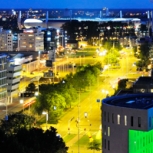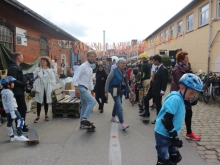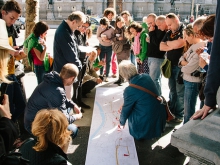
Eindhoven
Having received its city rights in 1232, the turning point for Eindhoven came at the end of the 19th century, when Philips established its lamps factory there. By the end of 1920, the town had merged with five surrounding villages, creating a regional agglomeration that is now home to around 750,000 people. Philips has not only become a global leader in electronics, but its presence has led to the creation of numerous high-tech spinoffs and suppliers. Other major employers are DAF Trucks and household goods manufacturer Brabantia.
As a result, the region managed to convert successfully from a traditional industrial area into a hub based on high-value, technology-based products, currently generating €24 billion of GDP and €55 billion in exports, one-quarter of the Dutch total. A driving force in this achievement is a public-private partnership called Brainport Development, the agency coordinating the projects and knowledge transfer in the city’s technology region. More than 100 companies and institutes, and 8,000 researchers, developers and entrepreneurs work in this area. Almost half of all Dutch patent applications originate here. Brainport Development’s members include employers, research institutes, the Chamber of Commerce, leading universities and the governments of the region’s three largest cities.
Inevitably, major societal themes also have an impact on the competitiveness of a region that faces a growing need for energy and food, an ageing population, climate change and strong international competition. The Brainport 2020 Strategy aims to find innovative solutions to these challenges, notably by drawing on the region’s main driver of innovation—the Eindhoven University of Technology (TUE) and its 7,000 students.
SOME RELATED NETWORKS
4D Cities
JOINING FORCES
News
200 European Cities publicly present the results of 2 years of common work
Article
Let us build the new politics starting from our everyday lives
Article
From participative to personal budgets: the power of responsibility sharing
Article
How Eindhoven unlocks the collaborative capacity of the city through social service delivery
Article







